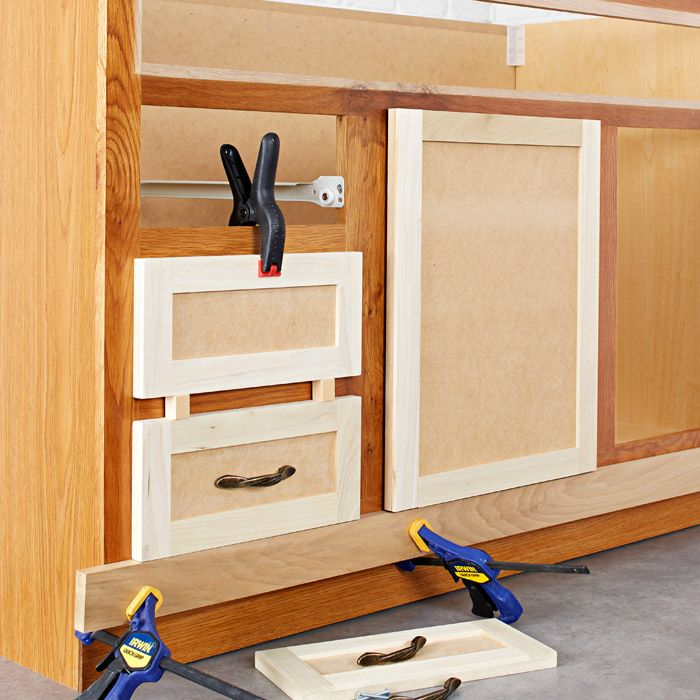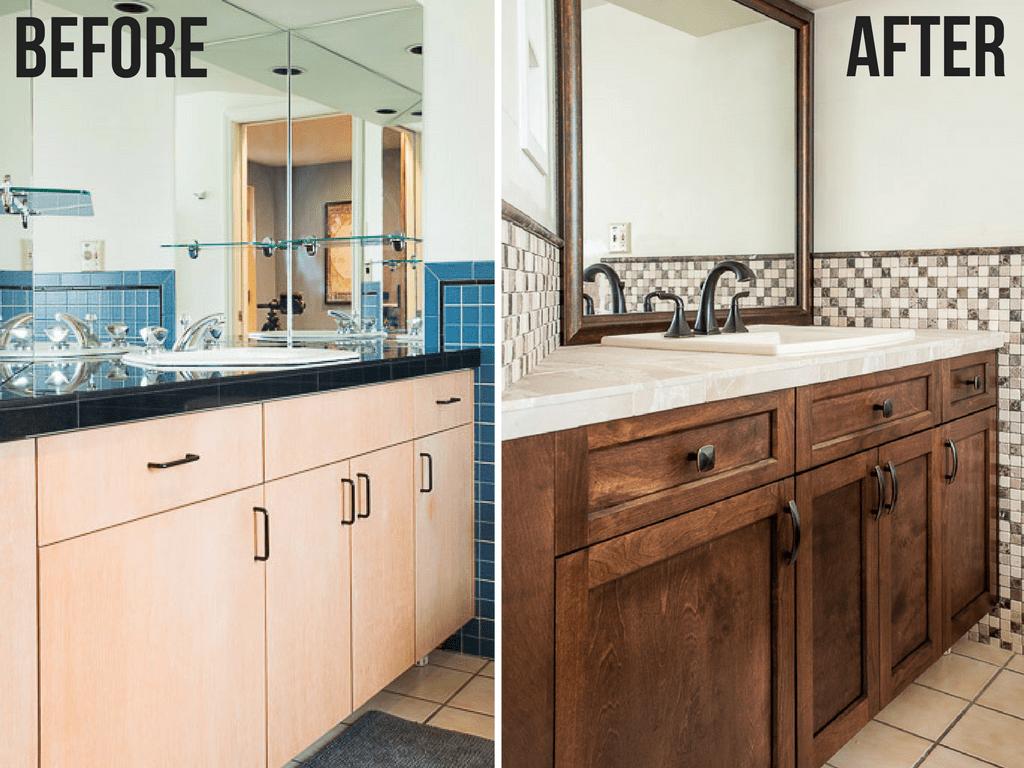Understanding Bathroom Cabinet Refacing

Refacing bathroom cabinet doors is a cost-effective way to give your bathroom a fresh new look without the hassle and expense of replacing the entire cabinets. It involves covering the existing cabinet doors with new materials, such as wood veneer, laminate, or paint.
The Process of Refacing Bathroom Cabinet Doors
Refacing bathroom cabinet doors involves several steps. First, you need to prepare the existing doors by removing any hardware and cleaning them thoroughly. Then, you can apply the new material, whether it’s veneer, laminate, or paint. Finally, you can reattach the hardware and enjoy your newly refreshed bathroom cabinets.
Benefits of Refacing Bathroom Cabinet Doors
Refacing bathroom cabinet doors offers several advantages over replacing them.
- Cost-effective: Refacing is significantly cheaper than replacing entire cabinets. You can save a substantial amount of money by simply updating the doors.
- Time-saving: Refacing is a faster process than replacing cabinets. You can have your bathroom cabinets looking new in a fraction of the time.
- Less mess: Refacing involves less demolition and debris than replacing cabinets. This means less disruption to your bathroom and less cleanup afterwards.
- Environmentally friendly: Refacing is a more sustainable option than replacing cabinets. It reduces waste and helps conserve resources.
Materials Used for Refacing Bathroom Cabinet Doors
Different materials can be used for refacing bathroom cabinet doors, each with its own unique advantages and disadvantages.
Wood Veneer
Wood veneer is a thin layer of real wood that is applied to the existing cabinet doors. It offers a natural and elegant look and can be stained or painted to match your desired aesthetic. However, wood veneer is more expensive than laminate and requires more care and maintenance.
Laminate
Laminate is a synthetic material that is durable and water-resistant, making it a good choice for bathroom cabinets. It comes in a wide variety of colors and patterns, so you can easily find a style that complements your bathroom décor. Laminate is also more affordable than wood veneer.
Paint
Painting is the most budget-friendly option for refacing bathroom cabinet doors. You can choose any color you like to create a completely new look. However, paint is less durable than veneer or laminate and may require more frequent touch-ups.
Preparing for Bathroom Cabinet Refacing: Refacing Bathroom Cabinet Doors

Before diving into the exciting process of refacing your bathroom cabinets, a little preparation goes a long way in ensuring a smooth and successful project. This section will guide you through the essential steps, tools, and materials needed to set the stage for a stunning transformation.
Gathering Necessary Tools and Materials
A well-equipped toolbox is crucial for a successful refacing project. The following list Artikels the essential tools and materials you’ll need to prepare your bathroom cabinets:
- Screwdriver: A trusty screwdriver with interchangeable heads will be your best friend for removing and installing hardware.
- Measuring Tape: Accuracy is key in refacing, so a reliable measuring tape is indispensable for taking precise measurements.
- Level: A level ensures that your new cabinet doors are perfectly aligned and straight.
- Safety Glasses: Protecting your eyes from flying debris is crucial, so wear safety glasses throughout the project.
- Work Gloves: Protect your hands from splinters and potential irritants by wearing work gloves.
- Hammer: A hammer comes in handy for removing stubborn hardware or securing items.
- Utility Knife: A utility knife is useful for cutting and trimming materials.
- Sandpaper: Sandpaper is essential for smoothing out any imperfections on the cabinet surfaces before refacing.
- Wood Filler: Wood filler helps to repair any cracks or gaps in the cabinet surfaces.
- Primer: A primer creates a smooth and uniform surface for the new cabinet doors to adhere to.
- Paint or Stain: Choose the desired paint or stain to match your bathroom’s aesthetic.
- Brushes or Roller: Apply paint or stain evenly using brushes or a roller.
- Cleaning Supplies: Ensure you have cleaning supplies on hand to wipe down surfaces and remove dust and debris.
Removing Existing Hardware
Before you can start refacing, it’s important to remove all existing hardware from your bathroom cabinets. This includes:
- Door Hinges: Carefully detach the door hinges using a screwdriver, noting the placement and orientation of each hinge for easy reinstallation.
- Knobs and Pulls: Remove any knobs or pulls from the cabinet doors using a screwdriver.
- Other Hardware: Remove any additional hardware, such as shelves, dividers, or decorative elements, taking care to note their placement for later reinstallation.
Preparing the Cabinet Surfaces
Once you’ve removed the hardware, it’s time to prepare the cabinet surfaces for refacing. This involves cleaning and smoothing out any imperfections:
- Cleaning: Wipe down the cabinet surfaces with a damp cloth to remove dust, grime, and any residue from the previous finish. Allow the surfaces to dry completely.
- Sanding: Lightly sand the cabinet surfaces with fine-grit sandpaper to create a smooth and even surface for the new cabinet doors to adhere to. Pay particular attention to any scratches, dents, or uneven areas.
- Filling Gaps: Use wood filler to repair any cracks or gaps in the cabinet surfaces. Apply the filler according to the manufacturer’s instructions, allowing it to dry completely before sanding it smooth.
- Priming: Apply a coat of primer to the cabinet surfaces. This helps to create a uniform base for the new finish and ensures that the new cabinet doors adhere properly.
Refacing Bathroom Cabinet Doors

Refacing bathroom cabinet doors involves applying new materials to their surfaces, transforming their appearance without replacing the entire cabinet. This process allows for a cost-effective and convenient way to update the look of your bathroom, bringing a fresh and modern feel to the space.
Applying New Materials
Refacing bathroom cabinet doors involves applying new materials to their surfaces, transforming their appearance without replacing the entire cabinet. This process allows for a cost-effective and convenient way to update the look of your bathroom, bringing a fresh and modern feel to the space.
There are several methods for applying new materials to bathroom cabinet doors, each with its own advantages and considerations:
- Veneer Application: Veneer is a thin layer of wood that is glued to the surface of the cabinet door. It offers a natural wood look and feel, and can be stained or painted to match your desired aesthetic.
- Laminate Overlay: Laminate is a durable and water-resistant material that is available in a wide range of colors and patterns. It is typically applied with adhesive, providing a smooth and easy-to-clean surface.
- Paint: Painting is a simple and affordable option for refacing bathroom cabinet doors. You can choose from a wide range of colors and finishes to achieve the desired look. However, proper preparation and application techniques are essential for a smooth and long-lasting finish.
Installing New Hardware and Accessories
Once the new materials are applied to the cabinet doors, you can install new hardware and accessories to complete the transformation. This can include:
- Cabinet Knobs and Pulls: Choose knobs and pulls that complement the new finish of your cabinet doors and enhance the overall design of your bathroom.
- Hinges: If the existing hinges are worn or outdated, consider replacing them with new hinges that match the style of the new hardware.
- Shelves: Adding new shelves can provide additional storage space and improve the functionality of your bathroom cabinets.
Comparing Refacing Methods
| Method | Advantages | Disadvantages |
|---|---|---|
| Veneer Application | Natural wood look and feel, can be stained or painted. | Can be more expensive than other options, requires careful application. |
| Laminate Overlay | Durable, water-resistant, wide range of colors and patterns, easy to clean. | Can be difficult to apply, may not be as customizable as veneer. |
| Paint | Affordable, simple to apply, wide range of colors and finishes. | Requires proper preparation and application techniques, may not be as durable as other options. |
Refacing bathroom cabinet doors is a simple way to give your space a fresh look, much like adding a new coat of paint to your bedroom. And if you’re looking to complete the transformation, consider pairing your updated bathroom with some stylish white night tables for bedroom.
These pieces will bring a touch of elegance and sophistication to your bedroom, just as your refaced cabinet doors will do for your bathroom.
Refacing your bathroom cabinet doors is a fantastic way to give your space a fresh look without a full-scale renovation. For a truly unique touch, consider incorporating a vintage china cabinet into your bathroom, as seen in this article.
Whether you choose a classic look or something more modern, refacing your cabinet doors can instantly elevate your bathroom’s style and create a spa-like retreat.
